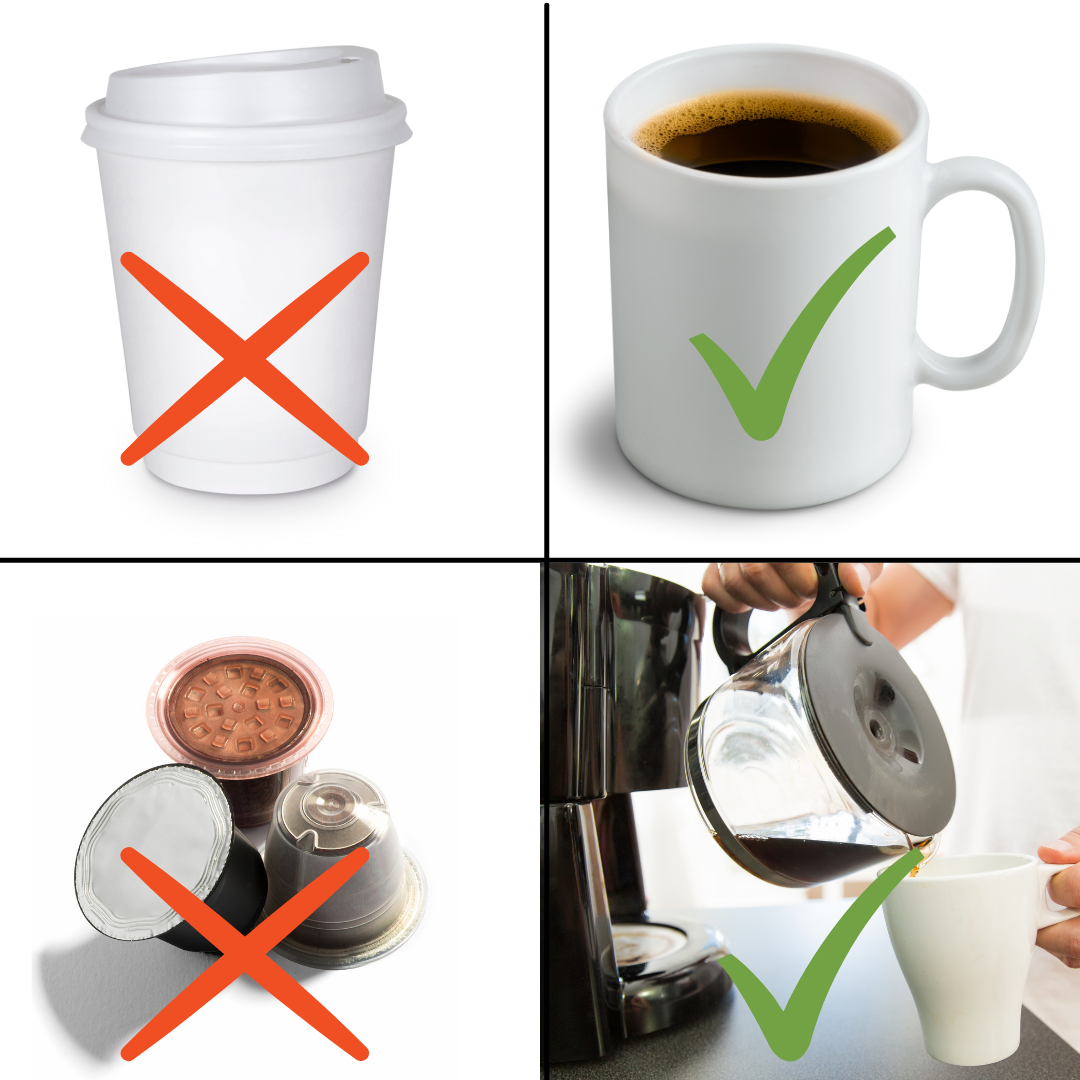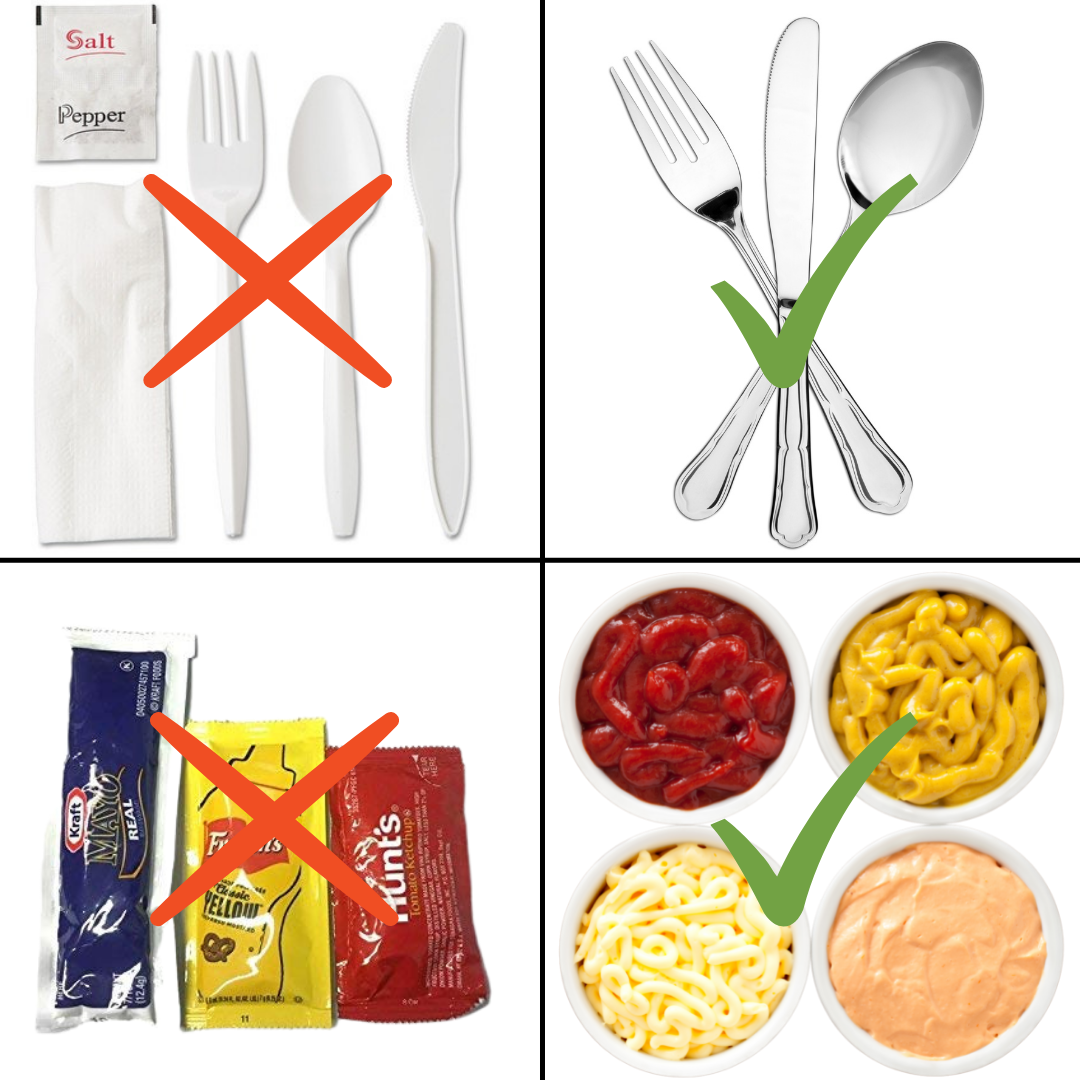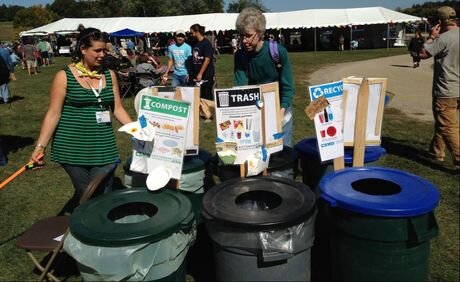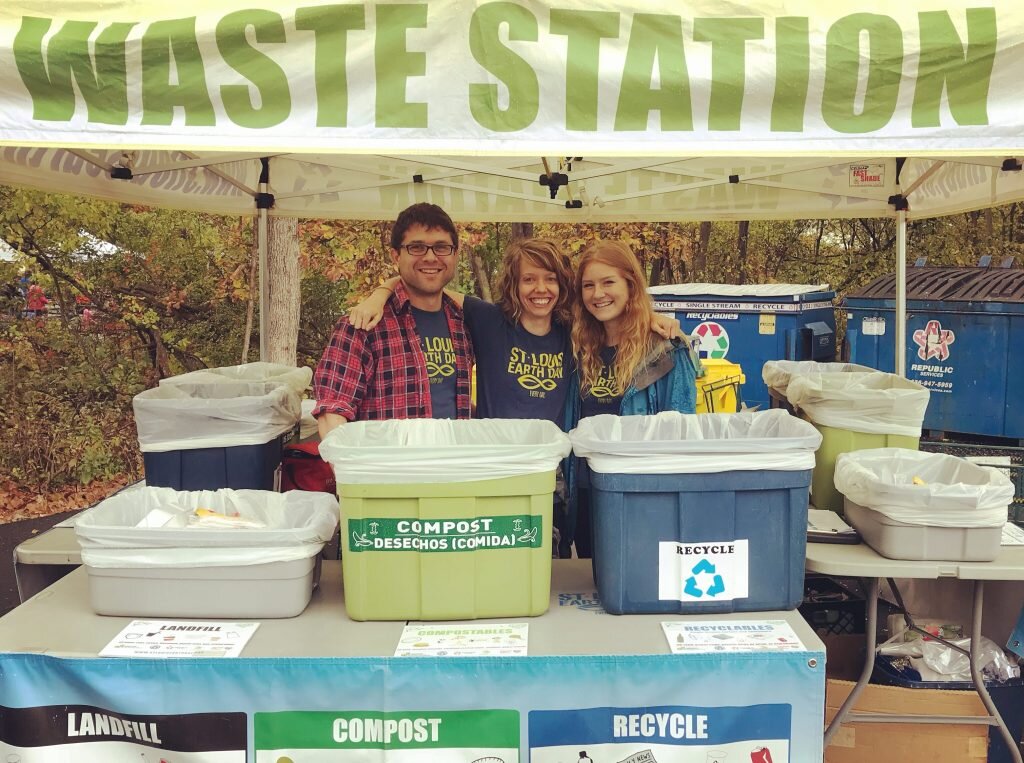HOW TO HOST A PLASTIC-FREE EVENT
Plastic pollution has reached a crisis point. More than 15 million metric tons of plastics enter our oceans every year, harming wildlife, degrading our environment, interfering with fisheries, and compromising the oceans’ ability to act as a critical carbon sink. But it’s not just ocean creatures who are impacted, recent studies have found that adult humans are consuming a credit card’s worth of plastic each week and recent research has raised concerns about the potential toxicity of many of the chemicals used in plastics.
Most single-use plastic items are typically used for less than 15 minutes before being disposed of, and only a tiny fraction of them are recycled. Once in a landfill or the environment, plastic never fully biodegrades. Instead, it breaks down into tiny plastic particles that act like a sponge, absorbing other toxic chemicals. A lot of these microplastic particles end up in our waterways, where they pose a severe problem for the health of marine life and the entire food chain through ingestion by wildlife. If we do not change course now, experts predict that the oceans will contain more plastic than fish by 2050.
Unfortunately, the plastic waste generated at events - from things such as cups, utensils, plates, water bottles - is a major source of unnecessary single-use plastic pollution. One study showed that a single event attendee discards 4.17 lbs of waste per day. For a one-thousand-person, three-day conference, that translates into 7,672 lbs of landfill material. (Or the equivalent of the weight of 2.6 compact cars).
Avoiding single-use plastic at events has many benefits. It can divert significant amounts of waste from landfills and incinerators, decrease pressure on municipal recycling systems, reduce greenhouse gas emissions, and decrease the demand for new single-use plastic items.
By opting for reusables and refillables over single-use plastics, we hope to model sustainable behavior and show others how easy and pleasant it is to have an impact. Here are some specific instructions about the kind of single-use items we want to avoid at our events and the reusable alternatives we would like to use, instead.
Please note that you can also offer stainless or glass water bottles, metal straws, and/or or stainless steel insulated mugs as the “swag” for your event - this should help boost compliance both during and after your event as well as providing a long-lasting branding opportunity for you or your event sponsors
|
Avoid These Items |
Replace With These Items |
|---|---|
|
Disposable plastic water bottles or drink bottles |
Pitchers of water on tables and water refill stations |
|
Paper napkins |
Cloth napkins, if possible. If not, paper should be 100% post-consumer recycled |
|
Disposable plates, bowls, and cutlery |
Washable plates, bowls, and cutlery made of ceramic, glass, metal, or wood |
|
Disposable hot cups |
Ceramic mugs |
|
Disposable drink cups |
Glasses |
|
Plastic straws, stirrers, lids, and spill plugs |
These are often unnecessary. In lieu of stirrers, put out metal spoons |
|
Single-serve sugar and artificial sweetener packets |
Sugar cubes or shaker bottles |
|
Single-serve creamers |
Carafes of milk, cream, and milk alternatives |
|
Individual tea packets, especially "sachet" style single-use tea bags made of PLA or nylon (see https://www.beyondplastics.org/fact-sheets/microplastics-in-tea for more info) |
Bulk loose leaf tea served in a carafe like coffee |
|
Single-serve foil or plastic-wrapped butter |
Pats of butter on a plate |
|
Single-serve sachets or tiny plastic tubs for condiments such as ketchup, mustard, dressing, sauce, etc. |
Bulk condiment dispensers and/or large reusable containers |
|
Takeaway containers |
Aluminum foil or wax paper wrap |
|
Individually plastic-wrapped candy/mints/chocolates |
Bulk treats presented on plates or in a bowl with a spoon |
|
Plastic-wrapped toothpicks |
Toothpicks that don’t come individually wrapped |
|
Plastic tablecloths |
Washable fabric tablecloths |
|
Single-use centerpieces |
Reusable, plastic-free centerpieces |
|
Balloons, glitter, and plastic confetti |
Plants and flowers, paper, and reusable decorations (e.g. colorful streamers, paper lanterns, solar lights/fairy lights, flags and banners) |
|
Plastic cling wrap |
Beeswax wrap or aluminum foil |
|
Plastic bags |
Wax paper, paper, or reusable cotton bags |
|
Lanyards with plastic clips |
Lanyards made of natural fibers with metal clips. Collect them for reuse |
|
Plastic covers for name badges |
Cardboard name tags with no plastic covers |
|
Notebooks, pens, folders, printed event abstracts |
Wooden pencils, double sides materials on recycled paper or all electronic |
WASTE MANAGEMENT
Compost, recycling, and waste bins should be grouped together in “stations” with clear signage about what goes in each receptacle. Including photos of the items that go in each receptacle or, if feasible, just taping or stapling examples of the actual items on the receptacles can help ensure that people do not get confused and place the wrong items in the wrong bins.
Important! Plan to have a staff member or volunteer stationed at each waste station to guide people to leave things in the right places.
Please note: Compostable foodware is not a good option (see https://www.beyondplastics.org/fact-sheets/bad-news-about-bioplastics for more details). If it’s not possible to use a reusable item, a compostable alternative is only acceptable if the event venue is already contracting with a local, commercial composting facility that actually composts the material. No greenwashing.








